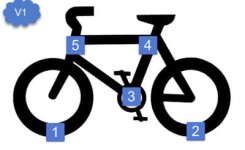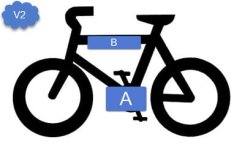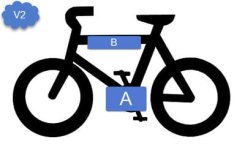Carry as much weight as you can in the triangle. Whether it's carried high or low will depend entirely on the bike frame type.
Most of what I've read does say for higher speed cornering a higher, but centered COG is best. But unless you are actually leaning into corners at 50 mph, I think what bikes do is what motorcycles would call low speed cornering. For that, lower the better, close to crank as possible, like a trials motorcycle.
I double dog dare you to take urban 90 degree corners at 30+ mph. Bet you take them at 25 tops.
If your battery is large capacity, then it will be heavy and bulky, and it won't be easy to carry it's weight in one point or another. It will be carried pretty much filling the whole triangle, or even spread out in multiple locations on the bike.
NO backpack carry for any kind of long ride, for the reasons kingfish said.
NO top of rear rack carry, if over 15 pounds.
Bear in mind, if your battery weighs less than 10 pounds, then it may have little significant effect no matter what the hell you do. Once it's that light, then you can carry it in the worst place, and hardly notice it cornering on pavement at 30 mph.
If you are dirt riding, then you likely are doing low speed cornering. Put 15 pounds of battery high on a rear rack and go dirt riding, and the bike will buck you off like a stubborn horse. You'll crash all day. But I carry a 4 pound battery the same way and have no trouble at all riding the bike on twisty trails.
Ideally for dirt, put that battery as low as possible, on the down tube. Hard to do on a Y frame though.
 There are so many places batteries and motors can be placed on the frame it is difficult to discern where the optimal placement of weight should lie.
There are so many places batteries and motors can be placed on the frame it is difficult to discern where the optimal placement of weight should lie. 


